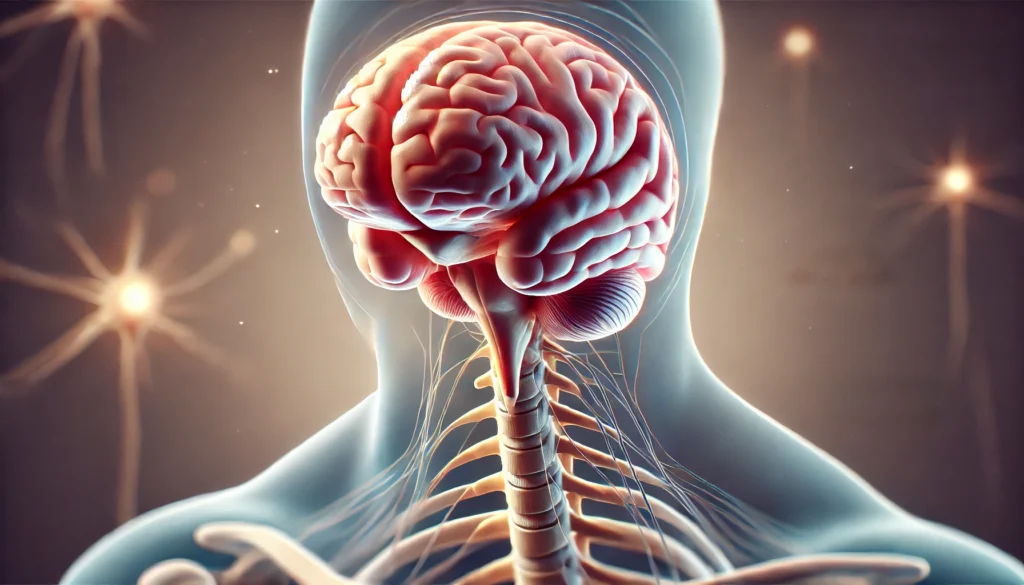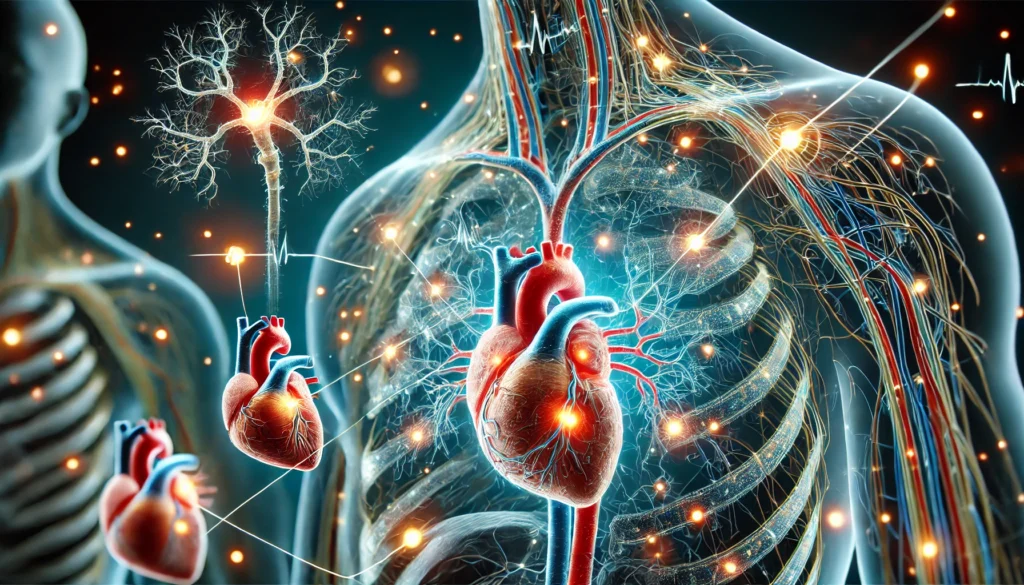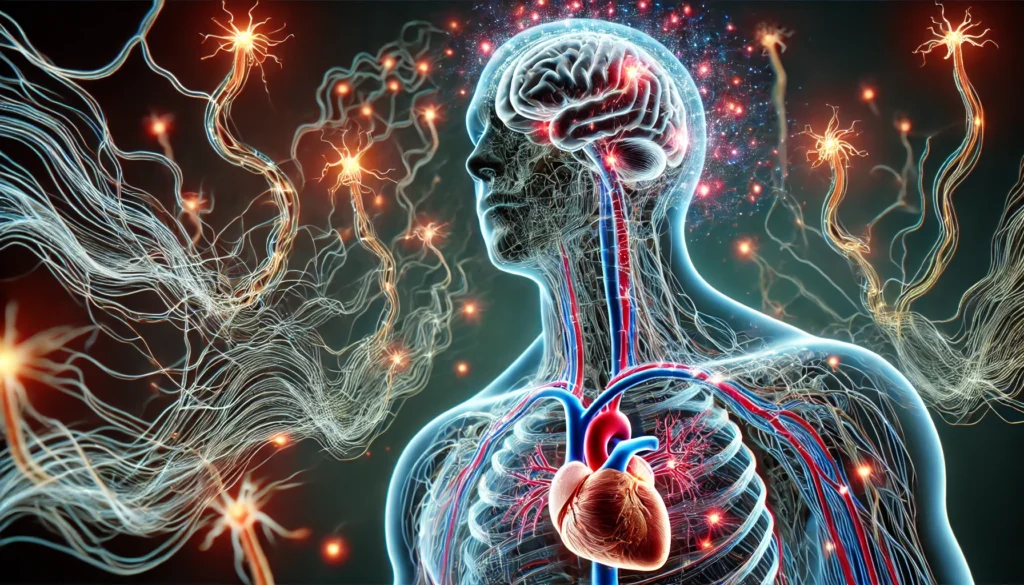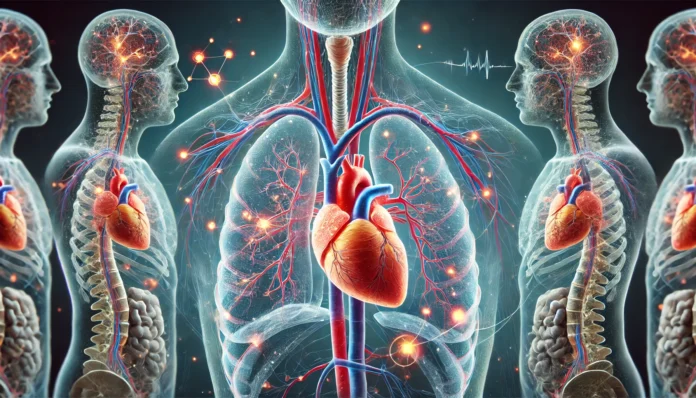Introduction
The human brain is a marvel of biological engineering, orchestrating countless physiological functions necessary for survival. Among its many structures, the medulla oblongata plays a crucial role in regulating some of the body’s most essential functions, including breathing and heart rate. Without this vital brainstem component, the body would struggle to maintain autonomic processes necessary for sustaining life. But what part of the brain controls heart rate? What part of the brain controls breathing? The answer lies largely within the medulla of the brain. This article delves into the fundamental functions of the medulla, its intricate mechanisms, and how it ensures the body’s survival by controlling breathing and heart rate.
You may also like : Best Things for Brain Health: Expert-Backed Strategies to Keep Your Mind Sharp
The Anatomy and Location of the Medulla Oblongata
The medulla oblongata, often referred to simply as the medulla, is a structure located at the lower portion of the brainstem, connecting the brain to the spinal cord. It sits just above the foramen magnum at the base of the skull, forming a direct link between the higher brain centers and the peripheral nervous system. Structurally, the medulla is composed of both gray and white matter, allowing it to process signals and relay vital information throughout the body. Understanding the medulla function in the brain requires an exploration of its specific regions, including the ventral and dorsal aspects, which house nuclei responsible for autonomic and motor control.
The Medulla’s Role in Regulating Heart Rate
When considering what part of the brain regulates heart rate, the medulla emerges as a central player. The cardiovascular center within the medulla comprises the cardiac accelerator and inhibitory centers, which fine-tune heart rate based on the body’s immediate needs. The medulla of the brain receives input from baroreceptors and chemoreceptors that detect changes in blood pressure and oxygen levels. When oxygen levels drop or carbon dioxide concentrations rise, the medulla signals the heart to beat faster, increasing circulation to meet metabolic demands. Conversely, during periods of rest, parasympathetic activation slows the heart rate, conserving energy and maintaining equilibrium.
How the Medulla Controls Breathing
Breathing is an involuntary action controlled by the respiratory centers within the medulla. When asking what part of the brain is responsible for breathing, the answer is primarily the medulla oblongata, in conjunction with the pons. The medulla’s respiratory centers include the dorsal respiratory group (DRG) and the ventral respiratory group (VRG), which regulate the rhythm and depth of breaths. By responding to changes in blood gas levels, these centers adjust breathing patterns to ensure adequate oxygen intake and carbon dioxide elimination. This dynamic control is essential for maintaining homeostasis, particularly during physical exertion or at high altitudes.

The Medulla’s Reflexive Functions
Beyond controlling breathing and heart rate, the medulla also plays a key role in regulating several reflexive actions critical to survival. Swallowing, vomiting, sneezing, and coughing are all mediated by the medulla, ensuring the body can respond appropriately to environmental stimuli. These reflexes are essential for protecting the airway, expelling harmful substances, and maintaining overall health. The seamless integration of these reflexive actions highlights the medulla’s indispensable role in autonomic control.
Neural Pathways and the Medulla’s Connectivity
The medulla serves as a hub for neural pathways that link the brain to the body. It contains both ascending and descending tracts that carry sensory and motor signals. The corticospinal tract, for instance, passes through the medulla and is responsible for voluntary muscle movements. Meanwhile, the spinothalamic tract transmits sensory information such as pain and temperature. This intricate network of neural pathways allows the medulla to function as a critical relay station, ensuring efficient communication between the central and peripheral nervous systems.
The Impact of Medulla Dysfunction
Given its essential role, any damage to the medulla can have profound consequences. Conditions such as strokes, traumatic injuries, and degenerative diseases affecting the medulla can lead to life-threatening complications. Symptoms may include irregular heart rate, respiratory distress, difficulty swallowing, and impaired motor function. Understanding what part of the brain controls the heart and respiration underscores the importance of maintaining brainstem health. Advances in medical research continue to explore treatment options for conditions affecting the medulla, offering hope for individuals with neurological impairments.
The Medulla’s Role in Longevity and Anti-Aging
In the context of anti-aging and longevity, the medulla’s role in autonomic regulation cannot be overlooked. Optimal medulla function ensures cardiovascular and respiratory stability, which are fundamental to overall health and longevity. Emerging research suggests that neuroprotective strategies, including proper nutrition, physical activity, and cognitive engagement, can support brainstem health and mitigate age-related decline. By preserving medulla integrity, individuals may enhance their resilience against age-related diseases and promote sustained vitality.

Frequently Asked Questions (FAQ) on the Medulla Oblongata
1. What part of the brain controls heart rate, and how does it adjust to different conditions?
The medulla oblongata, located in the lower brainstem, is responsible for controlling heart rate. It houses the cardiovascular center, which consists of the cardiac accelerator and inhibitory centers. These centers receive input from sensory receptors that detect changes in blood pressure and oxygen levels, allowing the brain to regulate heart rate accordingly. For instance, during physical exertion, the medulla increases heart rate to deliver more oxygen-rich blood to muscles, while at rest, it slows the heart rate to conserve energy. This dynamic regulation ensures that the body maintains optimal circulation under various physiological conditions.
2. What part of the brain controls breathing, and how does it interact with the body’s oxygen needs?
Breathing is regulated by the respiratory centers in the medulla oblongata, which work in conjunction with the pons. The dorsal respiratory group (DRG) and ventral respiratory group (VRG) within the medulla coordinate the rhythm and depth of breathing based on the body’s oxygen and carbon dioxide levels. Chemoreceptors located in the blood vessels and brainstem continuously monitor these gases, signaling the medulla to adjust the breathing rate when necessary. For example, if carbon dioxide levels rise, the medulla signals an increase in respiration to expel excess CO2 and restore balance. This intricate control mechanism ensures that breathing remains efficient and responsive to metabolic demands.
3. How does the medulla function in the brain to integrate signals from other body systems?
The medulla function in the brain extends beyond basic life-sustaining activities; it serves as a crucial relay center for sensory and motor signals. It processes information from the autonomic nervous system, interpreting inputs from the heart, lungs, and digestive system to maintain homeostasis. The medulla also connects higher brain regions with the spinal cord, coordinating voluntary and involuntary actions. This integration allows the body to react swiftly to changes in the environment, such as adjusting blood pressure when standing up quickly or modulating respiration during sleep. The medulla’s ability to process multiple signals simultaneously highlights its essential role in overall physiological regulation.
4. What part of the brain controls breathing and heart rate simultaneously, and why is this connection important?
The medulla oblongata is responsible for controlling both breathing and heart rate simultaneously, ensuring that these two vital functions remain synchronized. This coordination is essential because oxygen delivery to tissues depends on both adequate ventilation and proper circulation. If breathing increases without a corresponding adjustment in heart rate, oxygen uptake can be inefficient. Conversely, if the heart pumps faster without increased respiration, the body may struggle to meet oxygen demands. The medulla’s integrated control of these systems ensures that the cardiovascular and respiratory systems function in harmony, adapting fluidly to activity levels, stress, and environmental changes.
5. How does the medulla of the brain protect against life-threatening conditions like asphyxiation?
The medulla of the brain contains specialized reflex centers that help prevent asphyxiation and maintain airway integrity. These include the coughing, sneezing, and gag reflexes, which are triggered by irritants in the throat and respiratory tract. Additionally, the medulla’s control over swallowing ensures that food does not enter the airway, reducing the risk of choking. When oxygen levels drop too low, the medulla can trigger rapid breathing and increase heart rate to compensate. By continuously monitoring and responding to respiratory challenges, the medulla plays a critical role in survival.
6. What part of the brain regulates heart rate, and how does it respond to stress?
The medulla oblongata regulates heart rate by balancing sympathetic and parasympathetic nervous system activity. During stress or danger, the sympathetic nervous system signals the medulla to increase heart rate and blood pressure, preparing the body for a ‘fight-or-flight’ response. In contrast, during relaxation, the parasympathetic system slows the heart rate, promoting rest and recovery. This dual regulation allows the body to adapt to varying emotional and physical states, ensuring that the cardiovascular system responds appropriately to both external stimuli and internal metabolic demands.
7. Does the brain control the heart independently, or does it rely on external factors?
While the medulla oblongata plays a central role in regulating heart rate, it does not act independently. It relies on feedback from baroreceptors (which detect blood pressure changes) and chemoreceptors (which monitor oxygen and carbon dioxide levels) to adjust cardiac output as needed. Additionally, the brain receives input from the endocrine system, particularly stress hormones like adrenaline, which can override normal heart rate control. This complex interaction between the nervous and endocrine systems allows the brain to fine-tune heart function based on physiological and environmental conditions.
8. What part of the brain controls the heart, and how does it adapt during exercise?
The medulla oblongata controls the heart through its cardiovascular regulatory centers. During exercise, the body requires more oxygen and nutrients, prompting the medulla to increase heart rate and blood flow to active muscles. This is achieved by reducing parasympathetic inhibition and enhancing sympathetic stimulation. The medulla also ensures that blood vessels dilate in areas where more oxygen is needed while constricting vessels in non-essential regions. This adaptive response maximizes efficiency, ensuring that the heart meets the body’s increased metabolic demands during physical activity.
9. What part of the brain is responsible for breathing, and how does it change during sleep?
The medulla oblongata is primarily responsible for breathing, and its activity shifts during sleep to accommodate different physiological needs. During non-REM sleep, breathing becomes slower and more regular due to reduced metabolic demands. In REM sleep, however, respiration can become irregular due to changes in brain activity and autonomic regulation. The medulla adjusts to these phases by modulating respiratory depth and frequency, ensuring that oxygen levels remain stable throughout the night. Additionally, during sleep apnea episodes, the medulla can initiate sudden gasps for air to prevent oxygen deprivation, demonstrating its role in maintaining uninterrupted respiration.
10. How does damage to the medulla oblongata affect breathing and heart rate regulation?
Damage to the medulla oblongata can have severe consequences, as it impairs the brain’s ability to regulate breathing and heart rate. Conditions such as strokes, traumatic brain injuries, or neurodegenerative diseases affecting the medulla may lead to respiratory failure, irregular heart rhythms, and difficulty swallowing. In extreme cases, damage can result in loss of consciousness or even death due to the inability to sustain vital autonomic functions. Rehabilitation strategies, including respiratory therapy and cardiovascular monitoring, can help manage the effects of medulla impairment, but prevention and early intervention remain the best approaches to protecting this critical brain structure.

Conclusion
The medulla oblongata stands as one of the most vital components of the brain, responsible for regulating functions critical to life. By controlling breathing and heart rate, the medulla ensures the body’s survival under varying conditions. Understanding what part of the brain controls breathing and heart rate deepens our appreciation of the medulla’s intricate design and its indispensable role in human physiology. As research progresses, continued exploration of medulla function in the brain will undoubtedly reveal new insights into brain health, disease prevention, and longevity.
brainstem function, autonomic nervous system control, cardiovascular regulation, respiratory center, brain-body communication, neurological health, brainstem disorders, involuntary reflexes, heart rate variability, central nervous system function, oxygen regulation in the brain, vagus nerve stimulation, stroke effects on breathing, neural pathways and heart rate, blood pressure control mechanism, breathing rhythm disorders, brainstem injury recovery, parasympathetic nervous system, medulla oblongata anatomy, brainstem and survival functions
Further Reading:
Parts of the Brain: Anatomy, Structure & Functions
The brain–heart axis: integrative cooperation of neural, mechanical and biochemical pathways
The Incredible Complexity: Exploring the Parts of the Human Brain Diagram
Disclaimer
The information contained in this article is provided for general informational purposes only and is not intended to serve as medical, legal, or professional advice. While Health11News strives to present accurate, up-to-date, and reliable content, no warranty or guarantee, expressed or implied, is made regarding the completeness, accuracy, or adequacy of the information provided. Readers are strongly advised to seek the guidance of a qualified healthcare provider or other relevant professionals before acting on any information contained in this article. Health11News, its authors, editors, and contributors expressly disclaim any liability for any damages, losses, or consequences arising directly or indirectly from the use, interpretation, or reliance on any information presented herein. The views and opinions expressed in this article are those of the author(s) and do not necessarily reflect the official policies or positions of Health11News


